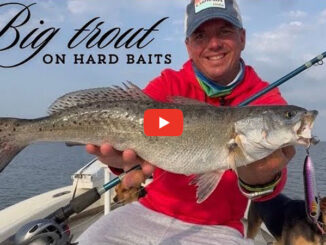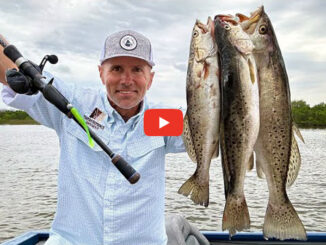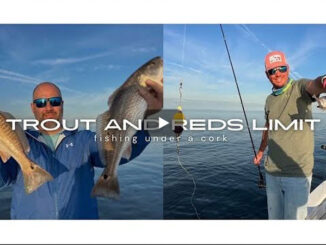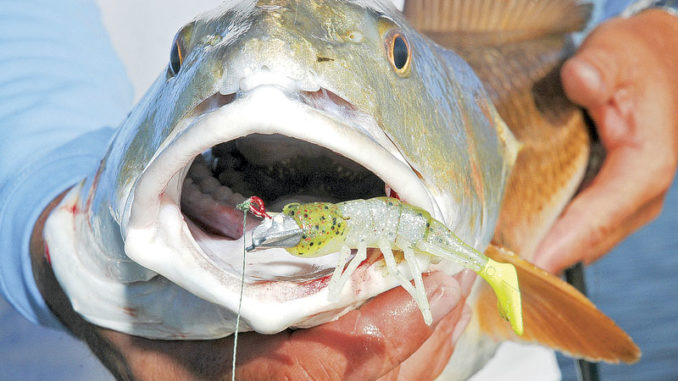
Rich waters around Biloxi Bay offer something for everyone
When French settlers established Fort Maurepas in present-day Ocean Springs in 1699, they found rich estuaries teeming with fish. While the area switched hands several times since then and the coastal skyline changed radically, the waters around Biloxi still offer abundant fishing opportunities.
Biloxi straddles a peninsula with Biloxi Bay, also known as Back Bay, on the northern side and Mississippi Sound to the south. The Tchoutacabouffa and Biloxi rivers create a rich marshy delta in the western part of Biloxi Bay. Old Fort Bayou feeds marshes at the eastern end of the bay. The bay connects to Mississippi Sound through a pass between Biloxi and Ocean Springs. Throughout the entire estuary and adjacent waters, anglers often find excellent fishing for several species. It’s a popular area for Louisiana and Mississippi fishermen.
“Fishing in June around Biloxi is really awesome,” said Robert Brodie of Team Brodie Charters (228-697-7707, teambrodiecharters.com) in Biloxi. “People can fish in the Gulf of Mexico, the rivers, around the islands, off the beaches and in the bays for many different species.”
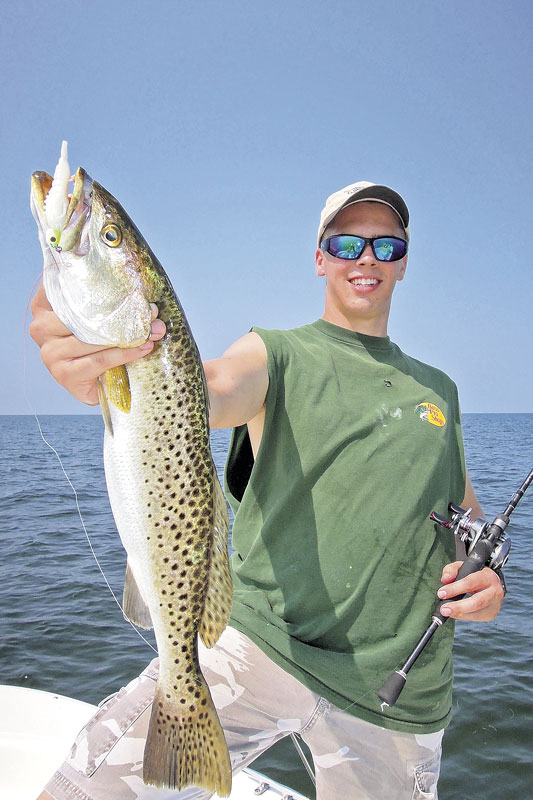
Speckled trout
To spawn, speckled trout require high salinity levels. As summer approaches, trout leave brackish bays, marshes and head to the Mississippi Sound for spawning. Spawning peaks from mid-May to June with a smaller peak in August.
“Some trout stay in the bay, but I mainly fish Mississippi Sound in the summer,” explained Mike Adams with Goin’ Coastal Charters (228-697-4808, goincoastalcharters.com) in Ocean Springs. “For trout, I focus on the islands and look for shell beds. The state put out quite a few artificial reefs that hold trout. Many people fish Katrina Reef for trout in the summer.”
Mississippi established numerous inshore, nearshore and offshore artificial reefs, frequently using hurricane debris. For instance, Katrina Reef sits just outside the bay in about nine feet of water. The state used old bridge spans to build the mile-long reef. The top protrudes from the water not far from Deer Island. Some days, anglers might land 10 or 12 species while fishing the reefs.
“Katrina Reef is good for trout during the summer,” Brodie said. “Many people throw popping corks baited with live shrimp close to the rocks. For big trout, fishermen mainly use live croakers around Deer Island. We’ve caught trout up to seven pounds.”
Redfish and flounder
Flounder and redfish like the same habitat, mostly hard structure and marshy shorelines. They commonly feed on the same forage, such as shrimp and small fish. The Old Fort Bayou and river deltas of Biloxi Bay attract good numbers of both species. Also fish the Graveline Bayou, Heron Bayou and Davis Bayou areas. In many places, anglers catch largemouth bass, redfish, flounder and other species in the same places on the same baits.
“Redfish start biting really well in June,” Adams said. “Flounder are coming back. For flounder, I look for any areas that have old pilings. Marshy banks with shells on the bottom are also good places to catch flounder.”
Dangle live shrimp or minnows under popping corks so the bait suspends just above the bottom. Plastic shrimp or minnow imitations fished under popping corks also entice action. Toss the rig so it drifts along a weedy bank or structure. Fish typically face into the flow to look for food.
People also catch redfish off the beaches and around old docks and pilings. The bridge pilings hold good redfish. These structures attract mullets and other baitfish attempting to hide from predators so that’s where redfish hunt.
“For redfish, I fish under piers in the summer,” Brodie said. “I try to find piers that hold more bait than others. Redfish like the shade under the piers. Older pilings loaded with barnacles and oysters on them attract more fish. I anchor up the current and fish back toward the piers with live shrimp.”
Around the islands, anglers might tempt giant bull reds with cut fish or live baits. The catch might also include large trout, flounder, black drum, bluefish, sharks, Spanish mackerel and other species. At night, many people walk the beaches with lanterns gigging flounder.
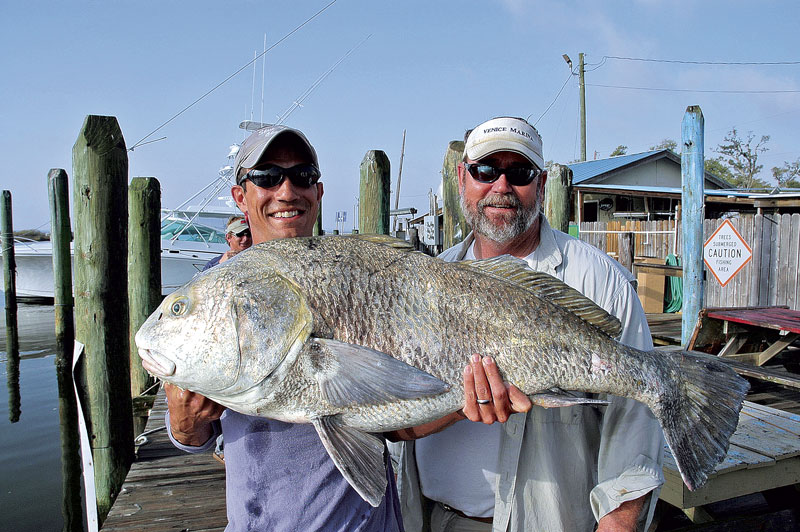
Black drum
Largely ignored by anglers, black drum provide tackle-busting big-game action without needing to go miles offshore. Enormous drum hang around where bull reds like to feed and regularly eat the same forage. Smaller “puppy” drum taste very similar to redfish and put up great fights on light tackle.
“Drum are great fighting fish and easy to catch,” said Kyle Johnson with Coastal Waters Outfitters (228-669-3553, www.fishcoastalwaters.com) in Biloxi. “People can catch really big fish in inshore waters or even off the dock. They are great for children. Catching a huge drum is something a child will never forget.”
Big drum might hit anything that would interest redfish. Anglers sometimes catch drum on jigs tipped with soft-plastic shrimp tails, spoons, spinnerbaits or Berkley Gulp! baits. Made of natural foods, Berkley Gulp! baits give off a scent that drum follow.
Drum normally scour the bottom looking for clams, crabs or shrimp. Drum might also hit squid, live minnows, pogies or cut bait, but prefer crustaceans. A cracked crab makes an excellent temptation for bull reds and monster drum. Keep the top shell attached, but crack it to let succulent juices ooze into the water. Drum and reds also devour crab halves and small live blue crabs hooked through the back near the rounded swimmer fins.
“Black drum hang around any type of structure, like concrete or wood docks and bridge pilings,” Johnson said. “The piers behind the Palace Casino in Biloxi is a good place to catch big drum. The Highway 90 bridge, Katrina Reef and the rocks outside the Beau Rivage are also super spots for big drum. At night, people usually have a better chance of catching big drum.”
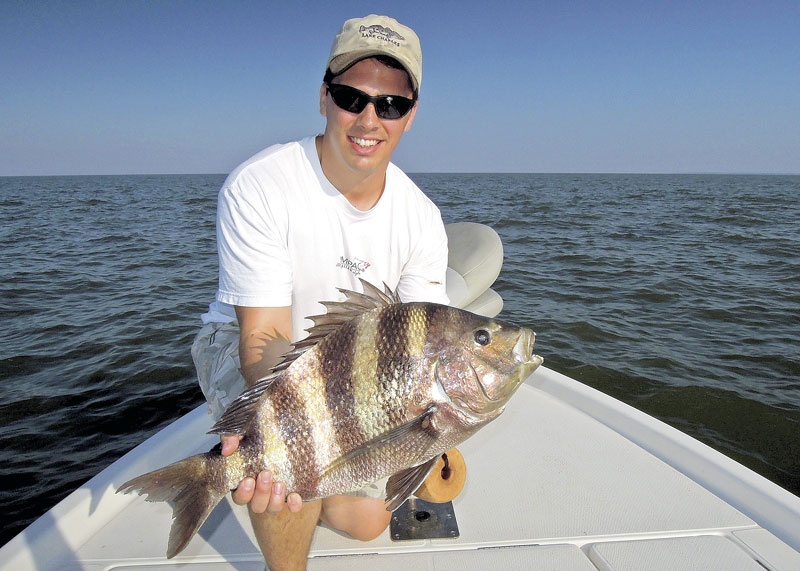
Sheepshead
Abundant, easy to catch and powerful fighters, sheepshead make exceptional sport for young or novice anglers. Built for power, not speed, sheepshead rely upon brute strength. They hunker down in entangling structure refusing to budge and daring anyone to pull them up.
Sheepshead love barnacles, shrimp and small crabs. For centuries, numerous storms scattered debris all over Biloxi Bay. In addition, thousands of dock and bridge pilings, artificial reefs or other barnacle-encrusted structures dot the bay and sound. Any of these structures could hold sheepshead. The bridge connecting Biloxi to Ocean Springs always produces good sheepshead action as well as the nearby railroad trestle.
“The bay is full of structures,” Brodie noted. “Wherever anglers find an old pier or pilings encrusted with barnacles, that’s a good place to fish. We catch some sheepshead around the bayou mouths, especially ones with oyster reefs, ledges or other nearby structure. Crabs make outstanding sheepshead baits. We pull the top shell off and break a blue crab in half or quarter it. For big crabs, we cut each half into three or four pieces. Fiddler crabs are like sheepshead candy.”
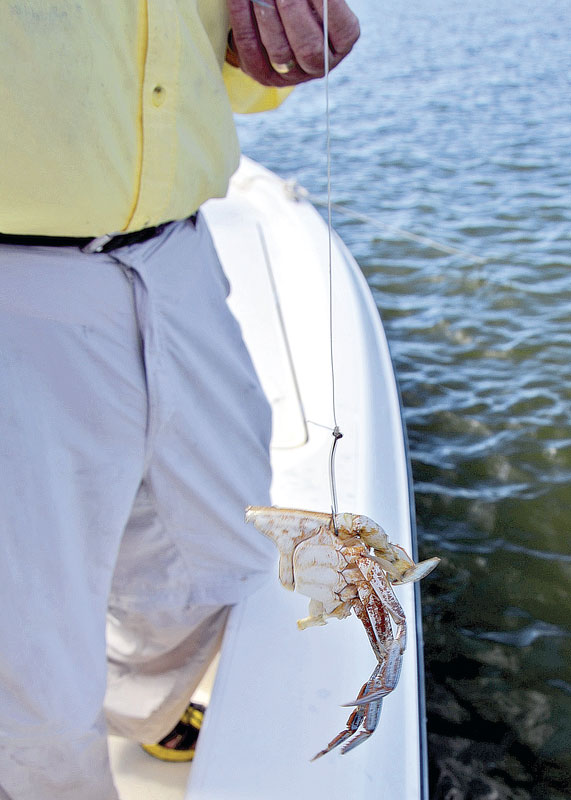
Other fishing opportunities
On any given day, anglers fishing Biloxi Bay or nearby waters could catch more than a dozen species. Many anglers love to catch tasty ground mullet, also called channel mullet, southern kingfish or whiting. Anglers also catch plentiful white trout, smaller cousins to specks. White trout might grab anything specks would hit.
“In late spring or early summer, the bay is full of white trout, ground mullet, drum and sheepshead,” Brodie said. “Personally, I think a white trout tastes better than a speckled trout. Ground mullet and white trout are fun to catch. Small hooks with small pieces of cut bait or squid is the ticket to catching them.”
Most people only consider croakers as bait for redfish and giant speckled trout, but the noisy, golden fish put up superb fights on light tackle. In the summer, look for croakers in deep holes and around structures like bridges.
Large schools of Spanish mackerel and bluefish cruise the coastline attacking baitfish. They slash at spoons or other shiny lures that mimic fish. Use wire leaders to keep these vicious toothy predators from biting through fishing line.
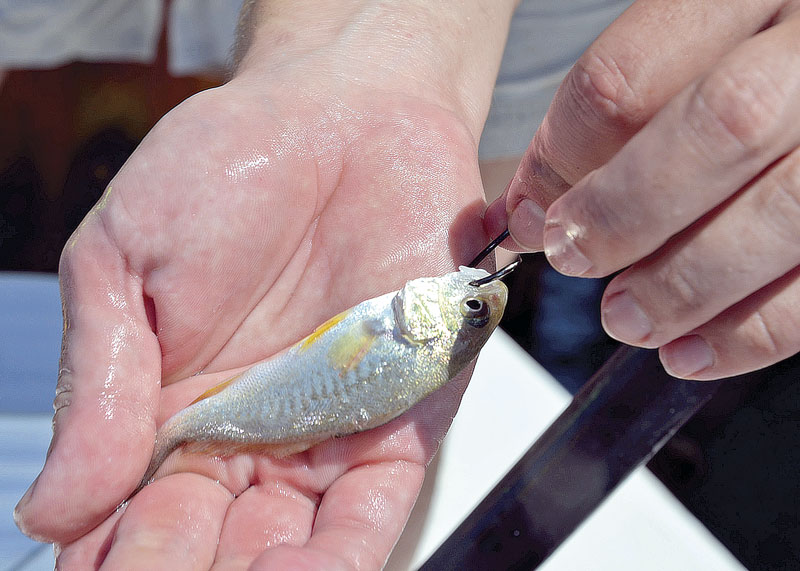
Jack crevalle schools also terrorize baitfish. Not considered great food fish, jacks outfight just about anything. When they move through an area, they churn the surface. Toss a large topwater bait ahead of the school. Twitch it a little and watch for massive blow-ups.
“Big jack crevalle and big bull redfish come in about the first week of June,” said Bill “Wild Bill” Hancock of Reel Outlaw Charters (601-807-5811, reeloutlawcharters.com) in Gulfport. “They crush bait all along the beaches and the islands. Jacks are looked down at by many people, but they are incredibly fun fish to catch.”
In Mississippi Sound, tripletail and cobia like to hover near any floating objects such as crab trap buoys and channel markers. Look for fish while running to new areas or returning to port. After spotting a fish, approach quietly and toss a bait to it.
Summer action doesn’t stop at sunset. Many anglers avoid the blistering heat by fishing around harbor and dock lights after dark. These lights attract an entire food chain. Fly rod enthusiasts could enjoy outstanding action at close range.
For area information, see www.gulfcoast.org. For artificial reef locations, see dmr.ms.gov/artificial-reef.
